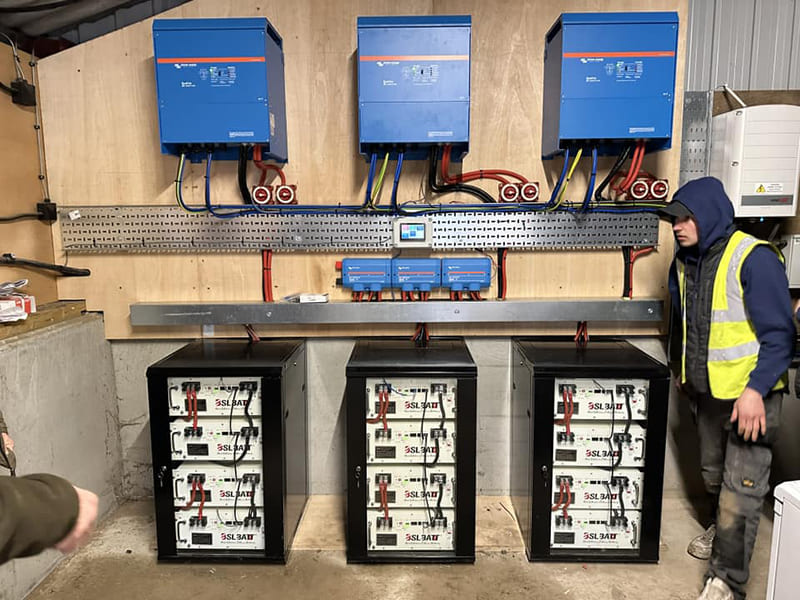Industry Application
Product Type
Technical Solution Route for User-side Energy Storage
What is user-side Energy Storage?
The main body of consumer-side energy storage is power users, mainly including industrial and commercial users and household users. The development of customer-side energy storage helps to save electricity costs and ensure the stability of electricity consumption.
Household Energy Storage
Household energy storage (household storage) refers to the energy storage system used for household users. It is usually installed in combination with a household photovoltaic (PV) system to provide electricity to the household.
The principle of operation is to prioritize PV power generation for local loads during the day, with excess energy stored in the battery and optionally connected to the grid if there is still a surplus of power; At night, when the PV system is not in operation, the battery is discharged for local load use.
Household energy storage systems can improve the degree of self-generation and self-use of household PV, reduce the user’s electricity expenditure, and guarantee the stability of the user’s electricity consumption in extreme weather and other circumstances.
For high electricity prices, peak and valley price differences, or the power grid in old areas, the acquisition of household storage systems has a better economy, household users have the motivation to purchase household storage systems.
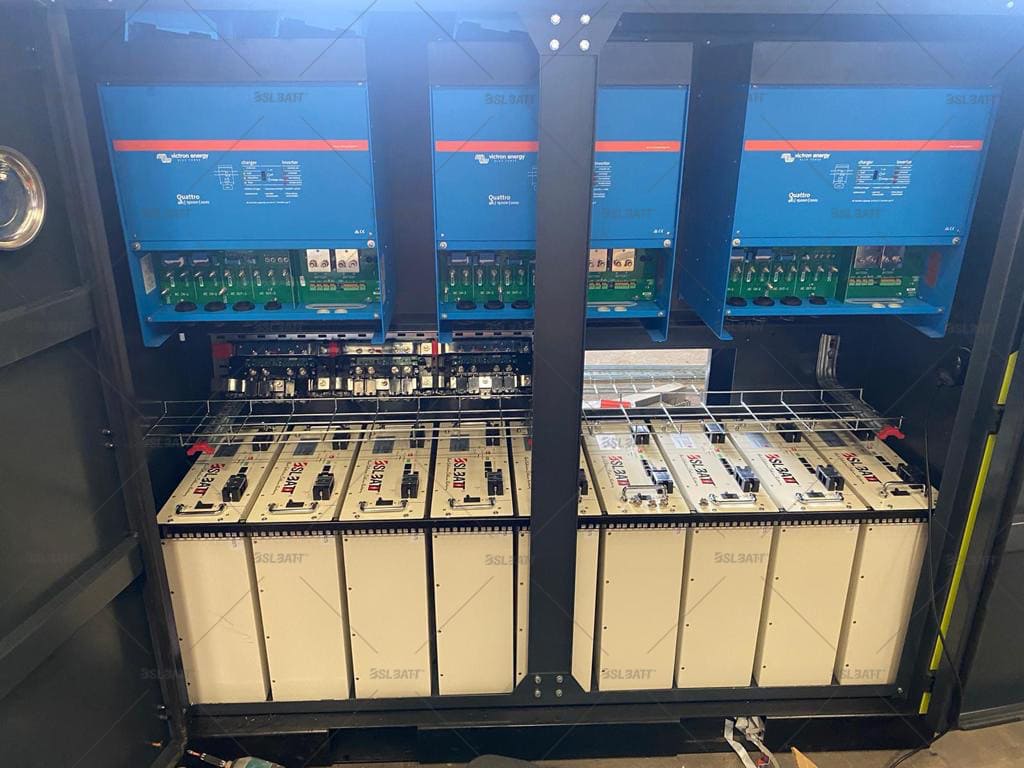
The core of the household energy storage system is a rechargeable energy storage battery, usually based on lithium-ion or lead-acid batteries, controlled by a computer, in coordination with other intelligent hardware and software to realize the charging and discharging cycle. Home energy storage systems can usually be combined with distributed photovoltaic power generation to form a home optical storage system.
Types of Energy Storage Products
Structurally, the energy storage products are container or prefabricated cabins, outdoor cabinets or indoor cabinets;
According to the cooling method, there are air-cooled and liquid-cooled;
Classified by electrical structure, there are centralized and string types;
According to the classification of energy storage systems, there are two types: equipment and battery split type and equipment and battery integrated type; according to the voltage level, there are two types: 1000V system and 1500V system;
Classified according to the energy pooling point, there are two types of DC coupling and AC coupling.
Large/medium-sized energy storage products, currently in the form of container or prefabricated cabin structure, generally used in the power supply side and the grid side, a small portion of the application in the user side, the cooling mode from the air-cooled gradually transitioned to the liquid-cooled, the electrical structure is centralized type is mainly, the string storage is also gradually joined, the voltage is gradually to 1500V, mainly in the form of AC coupling.
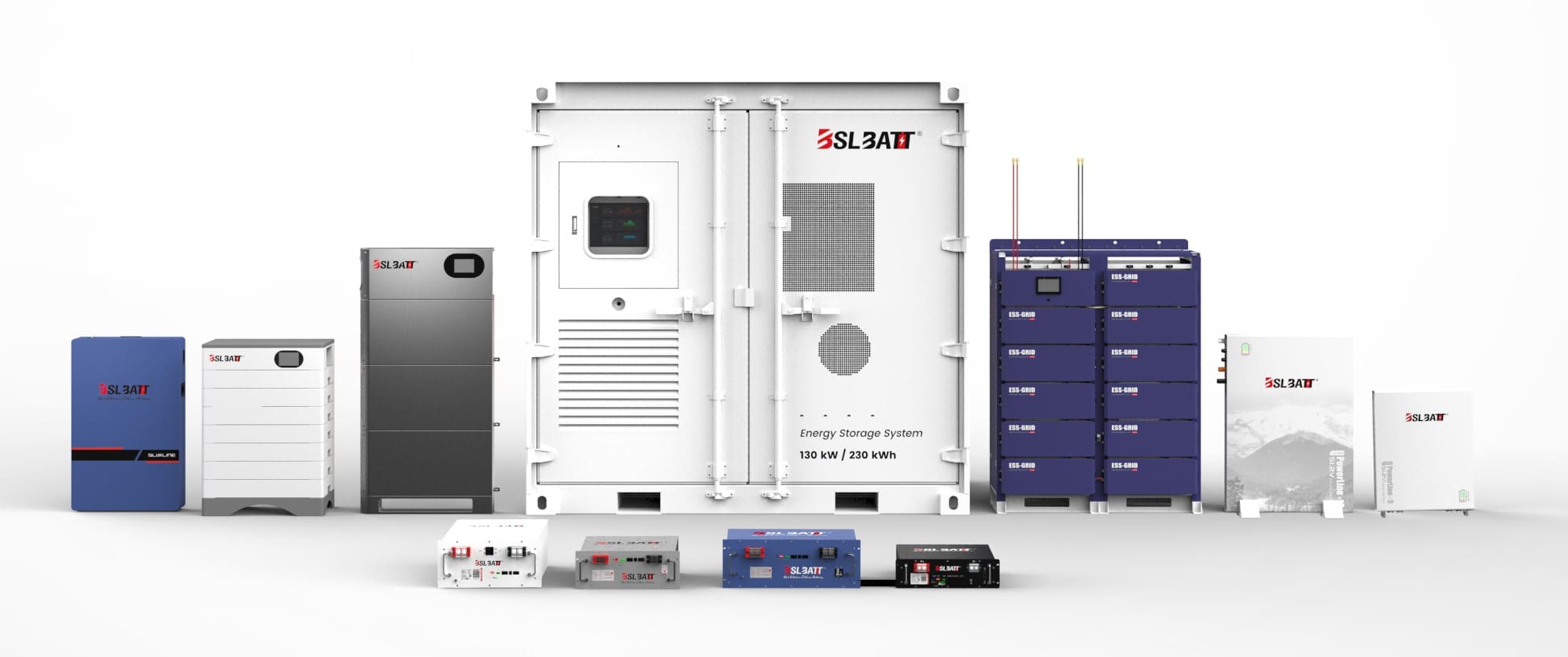
The industrial and commercial user-side energy storage revenue model is the peak and valley arbitrage, full of full discharge; the more charging and discharging, the greater the revenue; the higher the energy conversion efficiency, the smaller the loss, the greater the revenue. So the user-side energy storage system equipment with string cluster-controlled energy storage integrated system than the centralized energy storage integrated system yield is higher.
String cluster control type energy storage system each cluster of power effective utilization rate is high, no barrel short board effect; no parallel connection between clusters, no circulating current, high energy conversion efficiency.
Distributed small energy storage cabinets due to decentralized layout, considering the maintenance of high after-sales costs; demand for small purchasing volume, so the relevant devices and the overall system unit price to be higher.
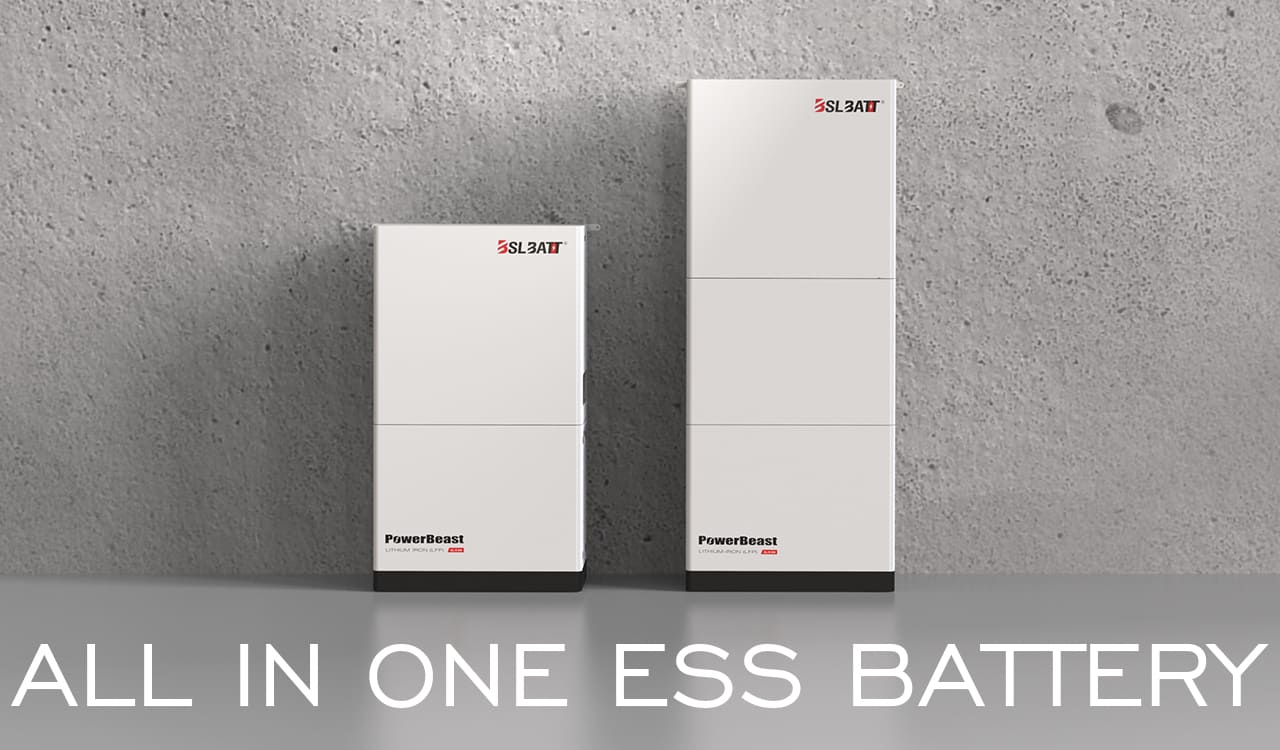
All-in-one AC/DC integrated energy storage container system. One cluster of batteries is docked to one PCS, cluster-controlled management.
High effective utilization of battery power, no inter-cluster parallel loop current, single-stage DC/AC converter unit, high energy conversion efficiency.
The string module machine does not contain DC switches and fuses and AC circuit breakers. Put in external integration, flexible configuration of these protection devices according to technical requirements.
The AC side of the PCS is equipped with branch circuit breakers (optional) and main circuit breakers (mandatory). Compared to a centralized energy storage system, the DC side omits the DC convergence cabinet and the DC-side switches and fuses on the PCS side as well as the third-level BMS.
The difference between the two integration methods is shrinking. However, the benefit of string energy storage system is much higher than the centralized type.
The effective capacity utilization (DOD) of a centralized storage system is 7.5% lower than that of a string storage system. Cycle life estimates are also 10% lower.
DC Coupling
As shown in the figure below, the DC power from the PV modules is stored in a battery bank, through a controller, and the grid can also charge the battery through a bidirectional DC-AC converter. The pooling point of energy is at the DC battery end:
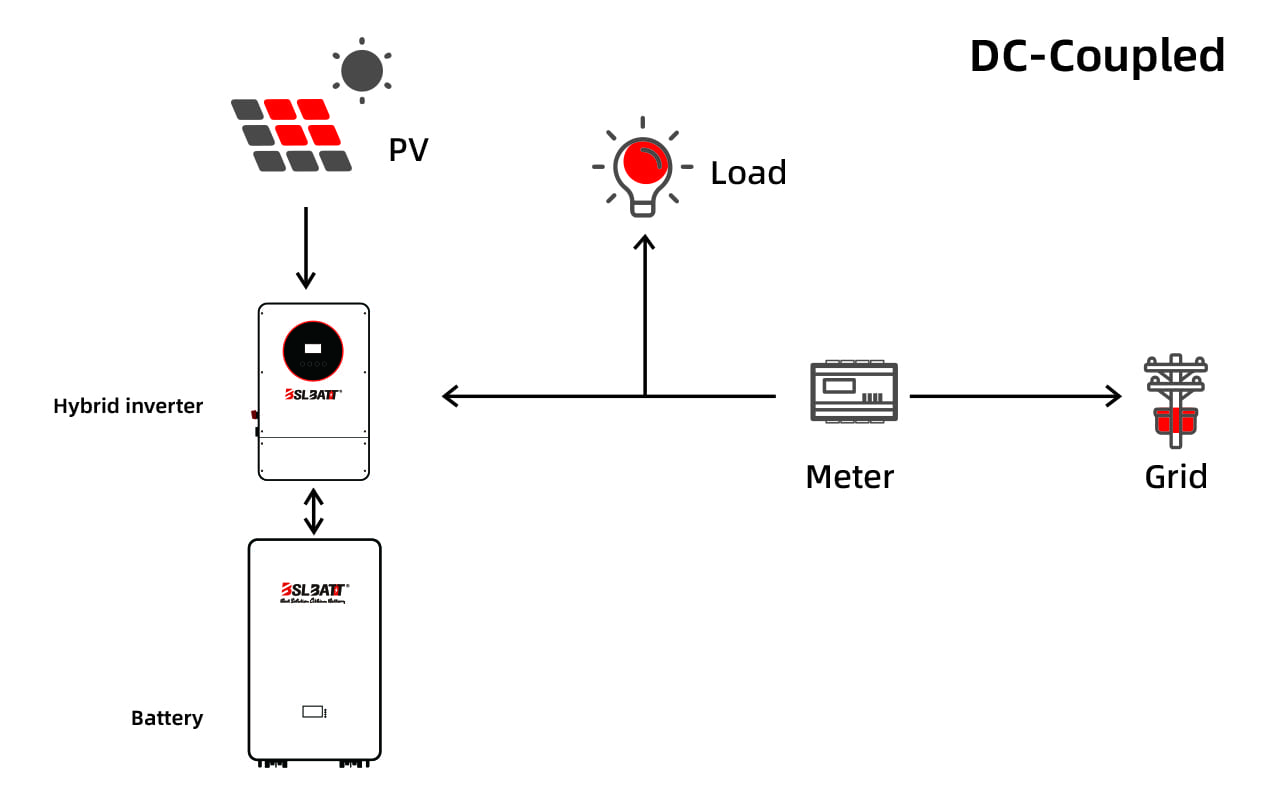
Working principle of DC coupling:
When the PV system is running, the battery is charged through the MPPT controller; when there is a demand from the consumer load, the battery will release the power, and the current is set by the load. The storage system is connected to the grid, if the load is small and the battery is full, the PV system can supply power to the grid.
When the load power is greater than the PV power, the grid and the PV can supply power to the load at the same time. Because neither the PV power nor the load power is stable, it depends on the battery to balance the system energy.
AC Coupling
The DC power from the PV modules is converted to AC power through the inverter, which is given directly to the load or fed to the grid, which can also be charged to the battery through the bi-directional DC-AC bi-directional converter.
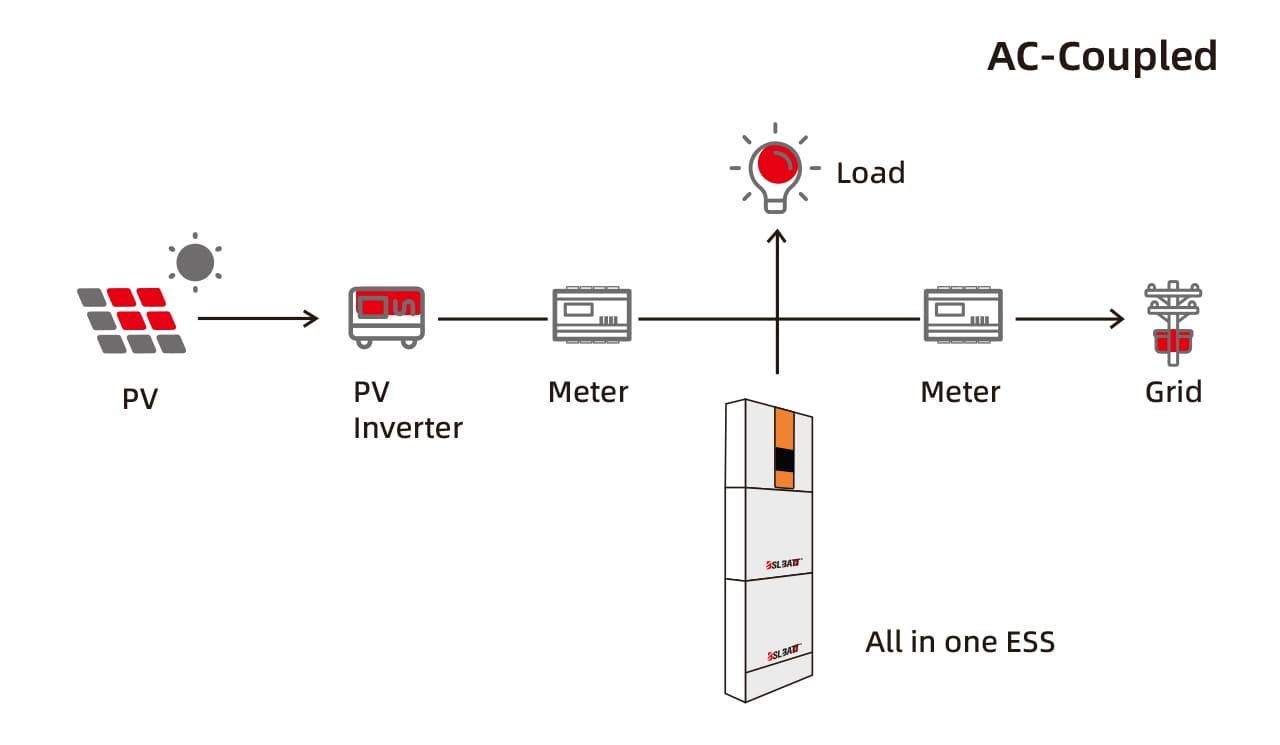
The energy convergence point is at the AC end.
The working principle of AC coupling: it contains PV power supply system and a battery power supply system.
The photovoltaic system consists of a photovoltaic array and a grid-connected inverter; the battery system consists of a battery bank and a bidirectional inverter.
These two systems can either operate independently without interfering with each other, or can be separated from the grid to form a micro-grid system.
From the currently installed cases, user-side energy storage using modular, string-type, AC-side coupling programs has become a trend, occupying more than 80% of the market share. This program is low cost, flexible in configuration, high security, suitable for industrial and commercial and off-grid energy storage power stations, while the DC side coupling centralized program, simple wiring, system stability, are suitable for small and medium-sized independent power stations.
A Guide to Choosing the Best 48V Lithium Golf Cart Battery
Would it be worth investing in a 48V ...
10 Exciting Ways To Use Your 12V Lithium Batteries
Back in 2016 when BSLBATT first began designing what would become the first drop-in replacemen...
BSLBATT Battery Company Receives Bulk Orders from North American Customers
BSLBATT®, a China Forklift battery manufacturer specializing in the material handling indust...
Fun Find Friday: BSLBATT Battery is coming to another great LogiMAT 2022
MEET US! VETTER’S EXHIBITION YEAR 2022! LogiMAT in Stuttgart: SMART – SUSTAINABLE – SAF...
Looking for new Distributors and Dealers for BSL Lithium Batteries
BSLBATT battery is a fast-paced, high-growth (200% YoY ) hi-tech company that is leading the a...
BSLBATT to Participate at MODEX 2022 on March 28-31 in Atlanta, GA
BSLBATT is one of the largest developers, manufacturers, and integrators of lithium-ion batter...
What makes the BSLBATT the Superior Lithium Battery for your Motive Power needs?
Electric forklift and Floor Cleaning Machines owners who seek the ultimate performance will fi...














